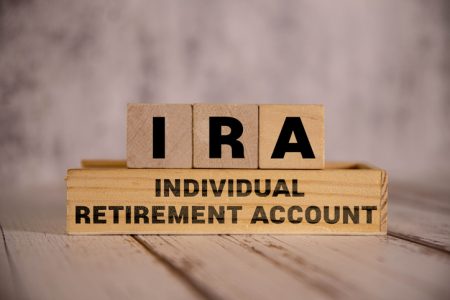By age 40, many people begin to evaluate whether their retirement savings are on track. While there’s no single benchmark that fits everyone, national data offers a reference point. Factors like income, years in the workforce and access to retirement plans all influence how much someone may have saved by this stage. However, according to retirement plan providers, the average account balance for a person in their early 40s is between $100,000 and $110,000. Looking at both average and median 401(k) balances can help frame what’s typical and what’s possible for retirement planning in your 40s.
A financial advisor can help you assess how much income you’ll need in retirement and how much you’ll need to save to get there.
What Your Retirement Savings Should Look Like by Age 40
Data from major retirement plan providers and government surveys offers a snapshot of what retirement savings often look like by the time people reach age 40. According to Vanguard’s “How America Saves 2025”1 report, the average 401(k) balance for participants ages 35 to 44 was $103,552 in 2024. However, the median balance in this age group was just $39,958, which points to the impact of high-income savers on the overall numbers.
Meanwhile, Fidelity reports that workers ages 40 to 44 had an average 401(k) balance of $109,100 by the end of 2024. This figure is based on more than 25 million retirement accounts and reflects only defined contribution plans such as 401(k)s2.
The Federal Reserve’s 2022 Survey of Consumer Finances offers additional insight by aggregating all types of retirement accounts, including 401(k)s, IRAs and pensions. For households headed by someone ages 35 to 44, the median and average total retirement savings was $45,000 and $141,520, respectively3. This includes both individual and workplace retirement plans, painting a more comprehensive picture of what the typical saver might have.
The wide gap between average and median values reflects uneven participation in retirement plans and differences in income, savings habits and access to employer-sponsored accounts. While some individuals in their early 40s may have hundreds of thousands of dollars saved, many others are still building momentum. These figures can serve as a reference, not a requirement, for assessing how your savings compare to broader trends.
Benchmarks to Guide Your Strategy

There’s more than one way to measure whether your retirement savings are on track. Some benchmarks are based on income multiples, while others focus on contribution rates, account balances or even replacement ratios. Using multiple frameworks together can help build a more flexible and realistic long-term plan.
Income Multiples
Fidelity’s rule of thumb suggests saving 1x your salary by age 30, 3x by 40, 6x by 50, and so on. For example, someone earning $80,000 should aim for a 401(k) balance of about $240,000 at age 40. These milestones are based on retiring at age 67 and assume steady contributions and investment growth.
Contribution Rates
Another approach focuses on annual savings targets. A common guideline is to contribute 15% of gross income, including employer matches. For someone making $90,000, this means saving $13,500 a year. If they start at age 30 and contribute consistently each month with 7% annual returns, they could accumulate over $192,000 by age 40.
Replacement Ratios
Rather than hitting a fixed balance, some benchmarks focus on replacing 70% to 80% of your pre-retirement income. If your target retirement income is $60,000 per year, you may need to accumulate roughly $1.2 million by retirement age, assuming a 5% withdrawal rate. You can then work backward to estimate how much you should have saved by age 40 to stay on pace.
Time-Based Tracking
This method helps break progress into smaller checkpoints. For example, a worker may aim to double their 401(k) balance every five to seven years through a combination of contributions and compounding. This approach may feel more manageable for those who prefer short- and medium-term goals over long-range projections.
How to Catch Up and Reach Your Savings Goals
If your 401(k) balance at age 40 is lower than you’d like, several strategies can help you close the gap without overhauling your lifestyle. One of the most effective is gradually increasing your contribution rate. Even a 1% bump each year can make a significant difference over time, especially when combined with compounding investment returns.
For example, someone earning $95,000 who increases their contribution from 10% to 15% and receives a 4% employer match could increase their annual retirement savings from $9,500 to $18,050. Over a 10-year period with 7% annual returns, that change could generate more than $118,000 in additional retirement savings.
If you’re self-employed or have side income, consider opening a Solo 401(k) or SEP IRA to contribute additional funds beyond your workplace plan. Catch-up contributions also become available starting at age 50, but planning ahead in your 40s can reduce how much ground you’ll need to make up later.
Investment allocation matters as well. A portfolio that’s too conservative may struggle to outpace inflation. Reassessing your risk tolerance and rebalancing periodically can help keep your savings growth aligned with your long-term goals. Small, consistent adjustments tend to be the most sustainable way to get back on track.
Bottom Line

Knowing how much to have in your 401(k) at age 40 starts with understanding the range of real-world savings data and how your own situation compares. Average and median figures offer reference points, but the right number depends on earnings, saving patterns, and goals for retirement income. Evaluating your current balance alongside different benchmarks can help clarify whether any adjustments are needed. Age 40 can be a useful checkpoint for making changes that support long-term growth without needing to catch up all at once later on.
401(k) Portfolio Management Tips
- Consider working with a financial advisor who can help you optimize your asset allocation and integrate your 401(k) into a broader retirement and tax strategy. Finding a financial advisor doesn’t have to be hard. SmartAsset’s free tool matches you with vetted financial advisors who serve your area, and you can have a free introductory call with your advisor matches to decide which one you feel is right for you. If you’re ready to find an advisor who can help you achieve your financial goals, get started now.
- Many 401(k) plans include multiple mutual funds with similar underlying positions, particularly in large-cap U.S. equities. Review fund prospectuses and holdings to identify redundancy, and diversify across asset classes, sectors, and geographies rather than overloading on similar funds with different labels.
Photo credit: ©iStock.com/Cn0ra, ©iStock.com/fizkes, ©iStock.com/Deagreez
Read the full article here












